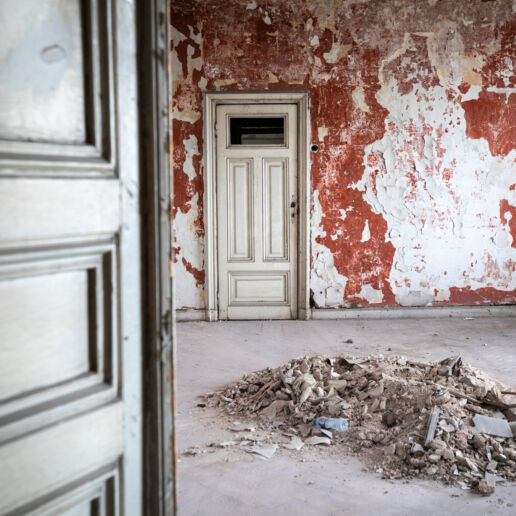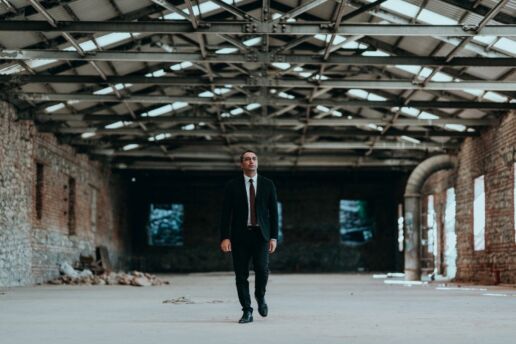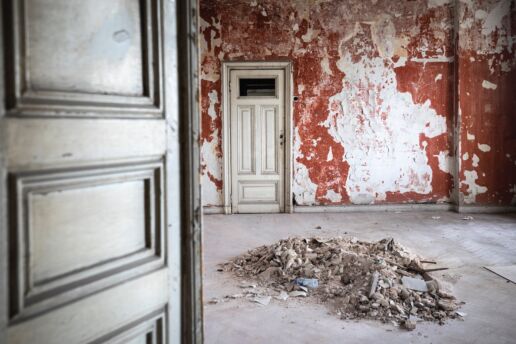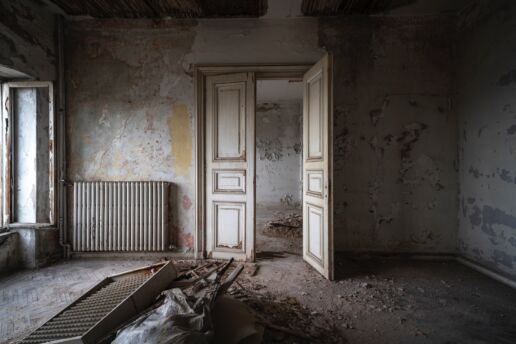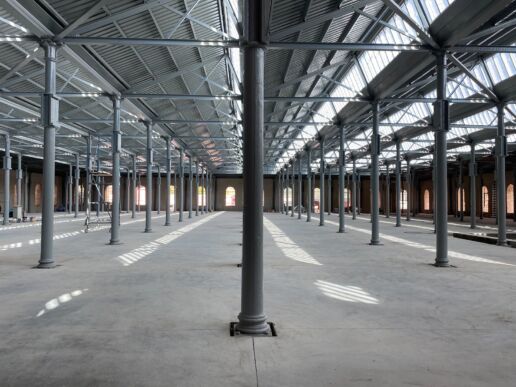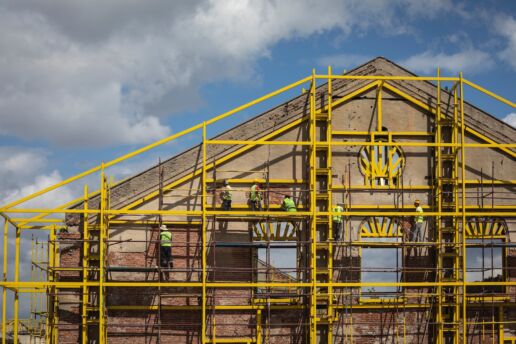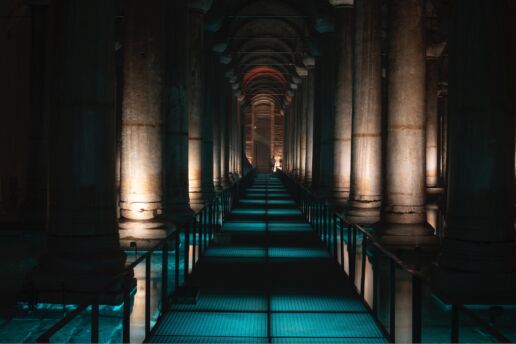PROTECTING ISTANBUL’S CULTURAL HERITAGE
The Istanbul Heritage project is an initiative of the Istanbul Metropolitan Municipality (IMM), aiming to restore the city’s culturally significant historic structures and repurpose them for the benefit of the public. We talked to IMM Deputy Secretary General Mahir Polat about this major initiative, which is an homage to the centuries-old cultural diversity of the communities that have made Istanbul their home.
PAPER Can you summarise the mission of the IMM Heritage project?
Mahir Polat We founded the IMM Heritage project in 2019, shortly after we took office following the most recent local elections. According to our research, there are 35,210 cultural assets listed in Istanbul. This equals one-third of the cultural assets in all of Turkey. There is a staggering amount of historical and cultural wealth here. Preserving and restoring cultural assets is essential in terms of creating space for today while leaving a legacy for future generations. The task is daunting. Everything has to be considered, including acquiring restoration permits, completing project design phases, and bringing together teams of experienced specialists. You also need a broad vision and a comprehensive roadmap to guide each phase. The vision put forward under the direction of IMM Mayor Ekrem İmamoğlu is to protect Istanbul’s cultural and industrial historical heritage in a holistic manner and without discrimination. Our transparent and inclusive restoration projects are in the hands of our professional team of 306 experts and guided by the team spirit of IMM Heritage.
P Istanbul is a cradle of civilisations. Derelict historical buildings from different periods can be found all over the city. Which neighbourhoods have the highest number of historic buildings? Is there a specific district where your activity is more concentrated?
MP Our work spreads across the city. Right now, projects of various scales continue at 1200 locations. It goes without saying that historical buildings are mostly located in the central and the oldest districts such as Fatih, Beyoğlu, Eyüpsultan, Kadıköy, Üsküdar, Beşiktaş, Şişli. I can say that our work is now mainly focused on Istiklal Avenue, and in Galata, Fatih and Eyüpsultan with the aim of diversifying the arts and cultural attractions of Istanbul. In the case of the Beyoğlu district, we have started with the restoration of the historical MAKSEM Art Gallery in Taksim Square. This will be connected to the Galatasaray Square exhibitions and then to Beyoğlu Cinema further down Istiklal Avenue. The scheme will then continue with the Muammer Karaca Theatre and the new art and design centre of the city, the Botter Apartment, and finally, reach Metrohan in Tünel Square. These buildings will certainly add vitality to Istiklal Avenue with their new functions and their focus on culture and the arts. IMM Heritage will soon be extending this area with another phase of the project that includes the 250-year-old St. Pierre Han and Kuyumcu Han in Karaköy.
P The number of early 20th-century buildings converted to commercial use – with cheap makeovers – is on the rise. What is the cause, and more importantly, what may be the consequences of that?
MP Few cities can match Istanbul’s unique cultural heritage. In many places around the world, especially in Europe, even the smallest historic site is protected, restored and transformed into an urban centre of attraction. We must take a similar approach to the vast heritage of this city. We cannot stress enough that all stakeholders should act with this awareness and collectively help to protect our heritage. Cultural and industrial heritage means more when it remains a part of daily life in the city. Another point of concern is the aesthetics of these structures. In recent years, we have been receiving a growing number of complaints from our citizens concerning illegal and unplanned restoration/renovation work taking place in the public and private areas of their neighbourhoods. Istanbul is defined by its history and the city’s cultural layers are closely knit. We should go beyond simple plasterwork on buildings for instance and focus on preserving these layers holistically. Bad refurbishments on listed buildings never add value, in fact, they can cause irreversible damage. Our city is unique and we must do everything possible to keep it that way. Sites of cultural significance offer an experience and inspire people. Creative professionals from fields such as art, culture, fashion, design, architecture, interior design, literature and music find inspiration in these locations. Ruining our heritage will make our city bland and uninspiring. For the city’s inhabitants to be disconnected from their past is probably one of the greatest disasters that can happen to Istanbul.
P I know that the permits required for the restoration of historical buildings in Istanbul are costly and take a long time to be issued. Do you think improving efficiency and reducing costs could be enough to encourage people to complete these restorations by the book?
MP Restoration permits and project design processes are not easy. They take a long time to process and cost considerable sums. This is a setback for many citizens keen to complete their projects without becoming mired in bureaucracy. But this is not just about cutting corners. Some citizens treat historical buildings like modern apartments, either ignoring or disregarding their cultural and historical significance. Raising awareness must be our priority. We must make people understand that even the smallest detail in those buildings bears traces of our past; things must be placed and preserved in the right context.
P As IMM Heritage you work on a variety of structures, from historical fountains to multistory buildings. What are the prioritization criteria you consider when determining which structures need and merit protection?
MP I would like to stress that there is no discrimination in our conservation schemes. We consider every culture and every community that has been in this city and left a mark on our heritage. Historical and cultural significance is an important criterion in conservation. Another point we consider is what the alternative is if we don’t go through with the conservation. What can we do if the building to be conserved is private property? These are a few of the challenges we are addressing.
P What is the general restoration principle of IMM Heritage? Would you describe it as “restoring a building to be reused for contemporary purposes” or strictly as “preserving a building’s original features and functions”?
MP Revealing the original features of a building is one of our main objectives. Take the Botter Apartment as an example. Located on Istiklal Avenue, this was the first Art Nouveau apartment in Istanbul and it is also where Istanbul’s first European-style fashion house opened its doors. We will prepare the ground floor of Botter as a design centre and open it in 2023 under the auspices of Istanbul’s UNESCO City of Design. Other projects along Istiklal Avenue include Metrohan in Tünel, Muammer Karaca Theatre and Beyoğlu Cinema. We will complete the restoration of these buildings in the near future and incorporate them into the cultural and intellectual life of Istiklal Avenue as inclusive, democratic and free spaces. We also focus on revealing original features in industrial heritage sites. Take the Feshane building on the shore of the Golden Horn, for example. This is a very exciting restoration project for us. It is a huge space with great aesthetics, featuring red brick walls supported by original 150-year-old Belgian cast steel columns. Like the Arsenale area that hosts the Venice Biennale, it will host very important art and cultural events when it opens in 2023. It might not be operating as a factory anymore but we will preserve the emphasis on the industrial past of the location. It will become an international art space. The past functions of a place provide a point of reference and give us inspiration. The Golden Horn area, in particular, is in a phase of post-industrial transformation. We aim to open this place to the public while preserving the remains and emphasising its significance as a historic port.
P The buildings you restore are often repurposed as centres for arts and culture. Are the other buildings planned to serve similar functions?
MP Actually, we now prefer to describe each project, more broadly, as an inclusive, democratic and free space that will welcome everyone rather than confining ourselves to each being only a centre for the arts and culture. We want to make sure that these restored spaces become part of daily life; art and cultural events will serve to make them more attractive and improve the quality of life. We have traveled to many countries to observe cities undergoing such transformations. The restoration of Oslo’s port area, including the Opera House, the Deichman Library, the Munch Museum and the Norwegian National Museum, is one of our favorite projects. Another example is London’s Southbank. This axis, which includes the Southbank Centre, the National Theatre, and the Tate Modern, is a very successful example of what we want to achieve. Berlin is also an important example in terms of balancing public and private initiatives and seeing how the city centre can effectively support both daily life and tourism.
P Which onsite experts are working on projects for IMM Heritage?
MP We have a great team of experts specialising in different subjects and do amazing work when they come together. Our team includes restoration experts, architects, art historians, museum professionals and archaeologists. However, there is something more than expertise at play here. All team members are people who truly love Istanbul and strive to protect and preserve this magnificent city. Good results are inevitable when passion and expertise collaborate.
P Which projects can we expect to be completed in 2023?
MP We have recently completed work in the Basilica Cistern, the Historical Land Fortifications (Land Fortification Visitor Centre Mevlanakapı and Silivrikapı), Historical Cendere Pumping Station (Cendere Art Museum), Moda Pier and the Fener Stone Houses (Haliç Art). Next year, we plan to complete the projects in Feshane, Muammer Karaca Theatre, Haldun Taner Theatre, St. Pierre Han, the Anadolu Hisarı, the BoukoleonPalace, the Botter Apartment, Rumeli Hisarı, Tünel Metrohan, Beyoğlu Cinema and Yedikule Gas Works. @ibbmiras


